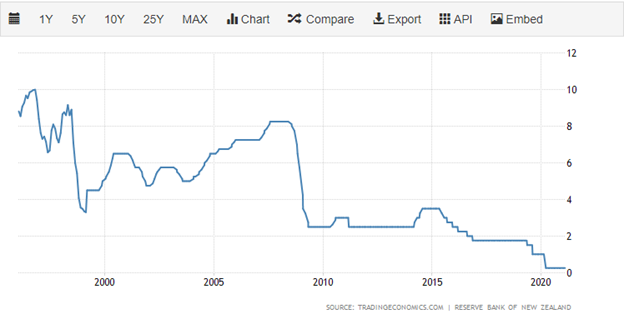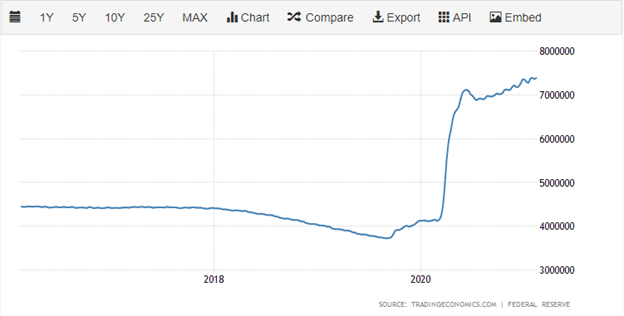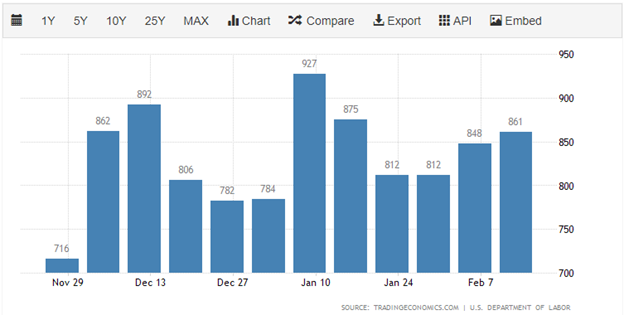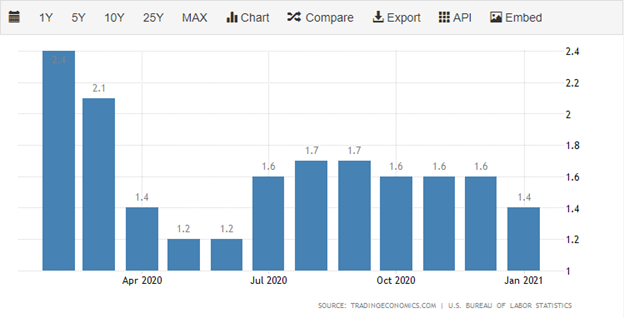During the upcoming trading week, the Reserve Bank of New Zealand interest rate decision and a key testimony from Federal Reserve Chair Jerome before US Congress headlines the economic calendar. A host of Federal Reserve members are set to deliver speeches this week and comment on the current US economic outlook.
Aside from the two main events market participants will be looking forward to the release of GDP and IFO data from Germany, and raft of jobs numbers from the United Kingdom economy. Data from the United State is also heavily in focus this week as the world’s largest economy releases GDP, Jobs, Consumer Confidence, Housing, Spending, and Inflation numbers.
In terms of market themes, rising bond yields in the US and globally is likely to be a key feature this week. Stocks and gold are looking particularly sensitive to the dynamic and may continue to take a hit if bond yields remain on the rise.
Reserve Bank of New Zealand
The Reserve Bank of New Zealand are widely tipped to keep interest rates on-hold this week, and sound slightly more hawkish than previous meetings. No change is expected in terms of bond purchases from the RBNZ.
RBNZ Governor Orr is expected to lay out the challenges that New Zealand economy still faces, despite the nation largely keeping COVID-19 under wraps during the pandemic. Recent economic data from New Zealand has painted a solid picture during the first quarter.


Market participants will be watching closely to see if the RBNZ mentions the strength of the New Zealand dollar. Antipodean currencies have been rising sharply against the greenback since the start of the year.
ECB & FED Speeches
The growth prospects of the eurozone are expected to be the main topic of discussion for ECB President Lagarde during her scheduled speech this week. Any mention of the euro currency, or recent strength will be closely watched. Recent strong PMI data from the EU reduces the risk of any surprises from Lagarde.
FED Chair Powell’s two-day testimony before US Congress could be a major market mover this week. Market participants will be closely engaged with the hearing to see the FED Chair’s current thoughts on the US economy, and especially the recent rise in inflation expectations from financial markets.


Chair Powell will be ultra-cautious when grilled about the so-called reflation trade. Powell will be acutely aware that any hawkish comments on US inflation could send financial markets into a tailspin. Expect Chair Powell to stick to script and strike his usual cautious approach.
US Weekly Jobs
Initial jobless claims in the United States ticked higher again last week, marking the second large weekly increase in a row for this closely followed job metric. This data point has helped to set the market tone towards the end of the week for some time now.
This week the market is expecting a big drop in Initial jobless claims. If this scenario unfolds then expect the recent pop in the US dollar and the US bond market to pick-up steam. If the drop fails to materialize then both trades will likely lose momentum.


Markets perception that the recovery from COVID-19 is on-track is going to be key going forward. If the market believes that the recovery is starting to happen then commodity prices should continue to rise.
US Core PCE
Core PCE is expected to remain muted this week, with a +0.1 percent increase. Traders pay close attention to PCE as it is the Federal Reserve’s preferred gauge on inflation. If economists are correct then the risk of the Federal Reserve turning hawkish towards rates are diminished.
The reflation trade is the talk of the town at the moment in financial markets and is currently driving the big trades such as bonds, commodities. Should we see Core PCE beating market expectations then these trades should accelerate.


Traders should remember that Core PCE excludes seasonally volatile products such as food and energy in order to capture an accurate calculation of the expenditure. Food and energy have been rising significantly recently for a variety of reasons, so markets may start to pay more attention to the US Consumer Price Index.




